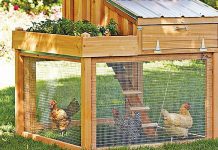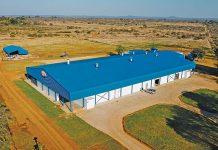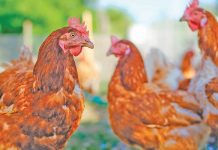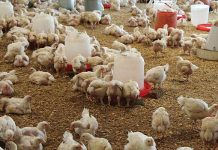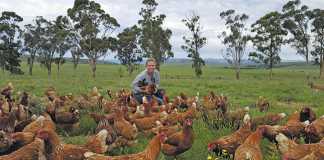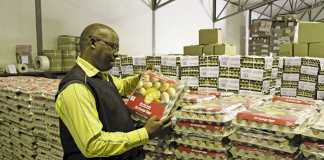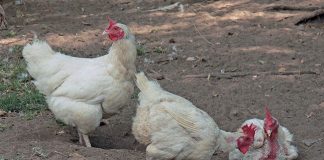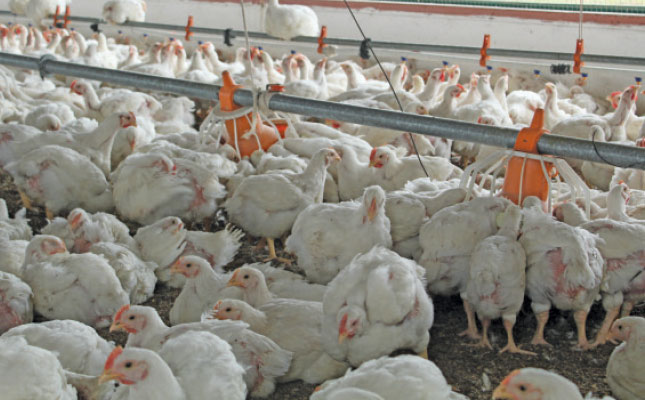
Photo: Lindi Botha
When you produce large numbers of chickens on a tight margin, the potential for sudden huge losses, in terms of both birds and money, is a daily reality.
Dale Shepherd, owner of Plaston Chicken Farms near White River, is keenly aware of this, which is why he focuses intently on maintaining the birds’ health at all times and keeping a tight rein on input costs in his 800 000-broiler operation.
If anyone knows how to make a poultry farming business work, it’s Shepherd. As the owner of the Banking and Financial Services Campus in Johannesburg, where he facilitates credit and risk management training in financial services, he has accumulated years of knowledge of how to make a business succeed or fail.
He also learnt a valuable lesson when venturing into chicken farming, as his first attempt had a less than favourable outcome.
“I tried to run the farm remotely from Johannesburg, with a farm manager on site,” he recalls. “But I realised very quickly that successful chicken farming requires a hands-on approach.”
Direct control
When Shepherd relocated to Mbombela, Mpumalanga, in 2011, he was offered the opportunity to rent land from a community property association (CPA), which had acquired the property through a land claim. The holding, which comprises two farms, was run-down, so the community was looking for someone who could farm there and from whom they could earn an income through rent.
In the decade since, Shepherd has established nine production houses on the two farms, which hold approximately 135 000 chickens at a time.
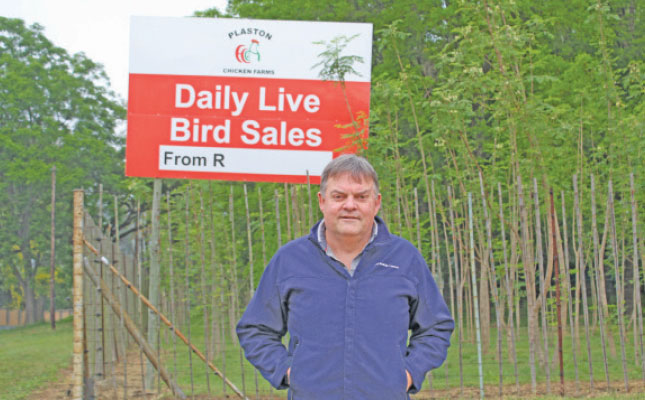
Plaston Chicken Farms sells live birds and has capitalised on an underserved segment of the market. As most of its customers have limited or no access to electricity, they are restricted in the number of birds they can take at once. Offtake agreements are therefore necessary to ensure a constant and steady supply of chickens.
The farm’s four trucks deliver up to 2 500 birds a day to clients in the surrounding areas, while smaller orders can be collected directly from the farm.
Shepherd’s breed of choice is the Cobb, but as it’s also the market favourite, supply can be limited. The Arbor Acres Plus and Ross breeds are more freely available, but it took some convincing to get his clientele to accept the latter.
“We’re very effective in producing a sizeable Ross bird. The breed’s legs are not particularly well feathered, though, and the perception is that this makes for an inferior bird. But we’ve proven to our clients that they’re still getting [birds of] the same weight, so there has been greater acceptance. They’re happy as long as we can give them a 1,8kg bird. So, without the market resistance, we can accept whatever day-old chicks are available.”
The birds are sold at 1,8kg to 1,9kg, which they reach within 38 to 42 days. Shepherd aims for a feed conversion rate (FCR) of 1,6kg to 1,9kg of feed for 1kg of weight gain.
Since input costs are one of the biggest challenges facing the business, these need to be managed with great care, as does the output. Shepherd’s approach is to have a manager in charge of each chicken house, and he or she is responsible for raising healthy birds.
“I provide them with everything they need for success, so all they have to do is manage things,” he says.
“Good management requires that chicken house workers live on the farm, as they need to be available any time, day or night, should a problem arise with the chickens.”
Constant communication
Shepherd has created a WhatsApp group for each production house, enabling instant communication between himself and his staff, and has arranged for progress reports to be given to him every morning.
Each worker must complete a checklist, which includes information such as the number of feed bags available, mortalities, the number of day-old chicks, and the quality of the birds’ bedding. The temperature in the houses must be measured six times a day to pre-empt any problems. This data is captured on a spreadsheet, which in turn goes into a single comprehensive management report, giving Shepherd ongoing insight into what is happening on the farm.
Mortality rates is one of the key issues that Shepherd focuses on. Given the sensitive nature of chickens, overlooking this factor can quickly lead to business failure. The farm maintains an average mortality rate of 5,5%, and staff receive bonuses for achieving targets.
“There’s a good understanding that house managers need to perform to earn such bonuses. Reducing mortality rates is dependent on [proper] management. If the rate suddenly shoots up in one of the houses, I can walk into it and immediately see why: the chickens don’t have enough space, the bedding hasn’t been turned and the ammonia smell is too strong, or there isn’t enough water. It’s all about paying attention and managing processes correctly,” explains Shepherd.
Feed, water and housing
He emphasises the importance of feeding the chickens on time every day, as allowing them to get too hungry inevitably leads to a stampede for food. The birds get trampled and scratched in the process, and so become more susceptible to disease.
“Water is also critical. Birds can go without food for a day or two, but not water. Last year we had heatwaves where the temperature reached 45°C. The water in the tanks outside got so hot that we had to cool it down with ice to reduce the stress on the birds.
“It takes keen focus and proper management to anticipate problems and do something about them before they occur. That’s why ticking the checklist several times a day is so important.”
In an area where temperatures can climb above 40°C in summer and drop to 6°C in winter, regulating the temperature in the houses requires airflow management. This is achieved with relatively simple infrastructure.
“There are no fans in the houses, so the curtains need to be raised and lowered to control the temperature. In summer, we drop the curtains completely and open the doors on either side so that we get a draught through the houses. In winter, we keep the doors closed and lift the side curtains just enough to let fresh air in and ammonia [fumes] out.
“If the birds gather when it’s hot, we try to split them up to keep them from suffocating. If we don’t keep an eye on them and ensure they aren’t overcrowded, their mortality rates can skyrocket.”
Gas heaters are used during the cold months to warm up the houses, which is especially crucial for the chicks.
Tracking progress
Shepherd maintains meticulous records to chart the progress of the operation. “I have records from day one of every chicken house on the farm. The main aspects to keep track of are feed conversation and mortalities. I look at the figures for the first seven days [of the birds’ lives], paying specific attention to any scraps, which are deformed chicks that will never reach the goal weight. They have to be [removed] as soon as possible, or the feed conversion figures won’t add up.”
Through his attention to FCR, he has reduced the period that the birds receive starter feed from 14 to 10 days, which has cut costs substantially, as starter feed is the most expensive ration.
“The chickens are weighed on days one, three, seven and 10. The view in the [industry] is that chicks should be given starter feed for the first 14 days, grower feed for another 14 days, and finisher food until slaughter.
“But I did some research and found that farmers in a number of countries give starter feed for only 10 days, so I began doing this and obtained good results. I weighed the birds on day 10 and found that they’d achieved acceptable weights between days 38 and 42 by moving to grower feed earlier.”
Shepherd prefers to fill a house with birds of a single breed from one supplier; this ensures that any problems with a particular batch can be pinpointed as quickly as possible.
“If there’s a mixed batch from multiple farms and one sick bird infects the rest, it’s difficult to pick up where the disease came from. We can get mixed batches at a lower price per [chick], but it’s not worth the risk.”
He records which breed is placed in each house and from which hatchery they were obtained; this enables him to monitor which breeds and suppliers produce the best results.
Breeds also differ in their growth spurts, so it’s important to know when the birds will peak so that they can be fed adequately. “If the breeds are mixed in a house, you can’t manage the feed as well.”
Managing risk
Biosecurity plays a significant role on the farm, and this has paid off: Plaston Chicken Farms has not had a single disease outbreak since its inception. There are footbaths at every entrance, and vehicles are sprayed down before entering the farm. In addition, access control ensures that outsiders do not unwittingly bring in diseases.
Shepherd’s strategy for success also entails calculating his break-even point every week. “I’ve worked out my variable costs, fixed costs, and the cost of producing one bird, which is R37. I then monitor my expenses, all of which are increasing now: day-old chicks, gas, transport, feed and fuel. We’ve had to raise the price we charge per bird by R1 to cover those costs.
“It’s important to keep an eye on these figures, because the margins are so small
that it’s easy to slip into a situation where we won’t make our money back. This is why mortality rates play such a crucial role. I can’t recover all these costs without producing a certain amount of product. If we go past 5,5% mortality, I start losing.”
If these figures start sliding towards the end of the scale, he negotiates with his suppliers. “If I can get a 50c/bird cost reduction from all my suppliers, I can stay in business.”
He notes that relationships carry a major risk in any business, yet they are often overlooked. This includes relationships with suppliers, creditors and, in his case, his landlord.
“I’ve built up a very good relationship with the CPA. I deal with one person, not the whole board, and we have a good understanding.
“[Plaston Chicken Farms] has a database of over 800 customers whom we message in their [own] languages when we have chickens for sale. This helps to nurture relationships that the business can’t do without.”
Shepherd says it is his passion for farming that drives him. “As long as I’ve covered my costs, paid my creditors, and there’s something small in it for me, I’m happy. I’ll farm for as long as I can.”
Email Dale Shepherd at [email protected].



